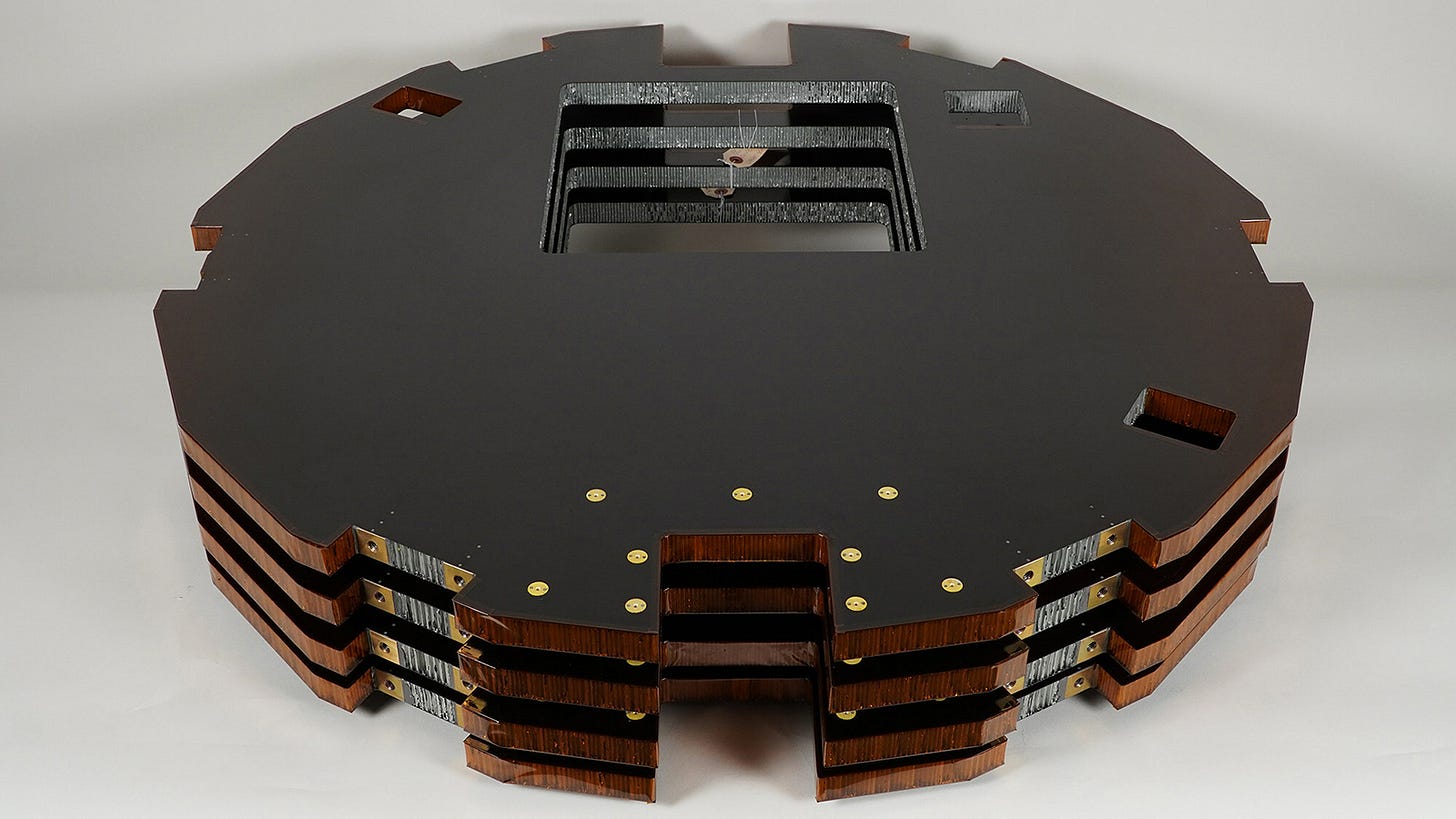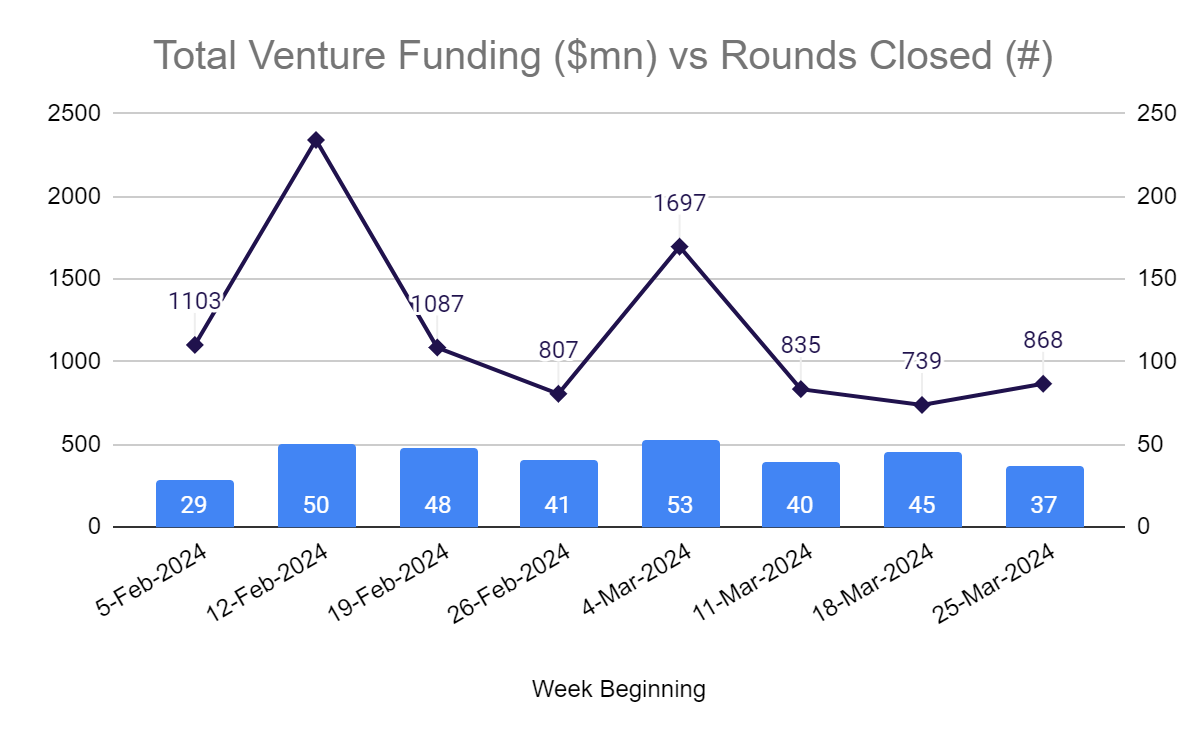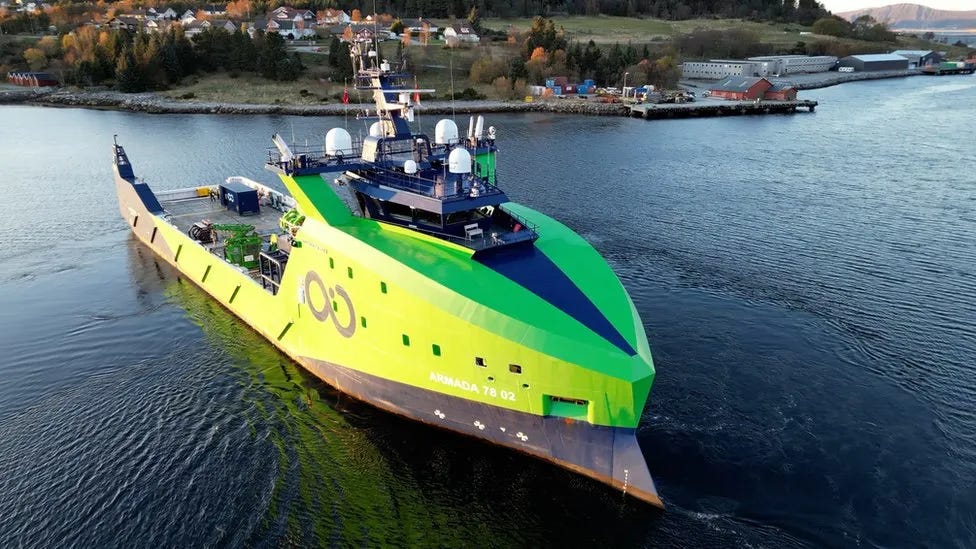Dual-Use Technology - March 2024
Welcome to the Deepsight monthly newsletter, where we run through the most important events in the world of dual-use technology.
Monthly Commentary:
Since its inception in 1949, the North Atlantic Treaty Organization, more commonly known by its abbreviation: NATO, has been central to global security. Of the alliance’s three original founding purposes, deterring soviet expansionism remains most relevant in the modern day, with Russia posing the most significant and direct threat to peace and stability in the Euro-Atlantic area following its invasion of Ukraine in 2022.
In deterring the Russian threat, March saw the Swedish flag raised at the NATO headquarters in Brussels, joining Finland, who joined a year earlier, in helping create a ‘Nato lake’ on Moscow’s doorstep in the Baltic Sea. This strategic move, alongside the $175bn in military aid and support from NATO Allies ($75bn from the United States alone), highlights the importance of the alliance in unifying efforts against security threats.
However, one new area in which NATO has also been building its capacity recently is in fact dual-use technologies. Ukraine’s response to the Russian invasion has readily demonstrated how civilian technologies can be mobilised for military applications, such as the use of drones highlighted in last month’s newsletter, or conversely; using a network of thousands of mobile phones deployed across the country to track incoming drones and missiles.
The Defence Innovation Accelerator for the North Atlantic (DIANA), which is tasked with finding and accelerating dual-use innovation capacity across the Alliance, announced its first cohort at the end of last year, focusing on key challenges in energy resilience, secure information sharing and subsea sensing and surveillance. In March, DIANA doubled the size of its network, allowing participants to access over 182 test sites from which to run trials with their technology, alongside the €100k in grant funding they will also receive for being a part of the program.
Startups that develop dual-use technologies through DIANA may also receive funding from the NATO Innovation Fund (NIF), a separate €1bn venture capital (VC) fund investing in companies developing or adapting technologies for defence and security. In March, NIF invested €10mn into German space tech VC fund Alpine Space Ventures and also joined Dutch VC fund OTB Ventures as a strategic limited partner as part of their latest $185mn fund.
Both DIANA and NIF form part of NATO’s wider strategy around what they call emerging and disruptive technologies (EDTs). These technologies are increasingly touching all aspects of civilian life, but are also having a profound impact on security. NATO’s recent activity in this space subsequently reaffirms the role dual-use technologies will play in the future of peace and stability within the alliance and how the line between military and civilian technologies is only continuing to blur.
TL;DR - Venture Markets:
184 dual-use technology ventures also raised $4,296mn from investors.
2 VC funds announced closure, raising $485mn from limited partners.
2 companies achieved exits, creating $2,325mn in value for shareholders.
Featured Insights:
Defence tech is all the rage but investors have their guard up (Sifted)
Robot ships: Huge remote-controlled vessels are setting sail (BBC)
A new shape for small spacecraft (Aerospace America)
What the cold war space race can teach us on AI (Financial Times)
China and Russia, the industrial production superpowers that could win a war (bne IntelliNews)
8 Google Employees Invented Modern AI. Here’s the Inside Story (WIRED)
Why the defense market must embrace an 'accelerate change or lose' mentality (Washington Technology)

Our Top 5 Funding Picks:
Bristol-based battery startup Anaphite has closed nearly £1.6mn in funding via private investment and government grants for its “dry-coating” manufacturing technology.
Firestorm Labs, an Unmanned Aerial System (UAS) manufacturer focused on additive manufacturing, announced its $12.5mn seed round led by Lockheed Martin Ventures.
Software startup Defense Unicorns has raised $35mn as part of a Series A round to accelerate software and generative AI solutions in classified and air gap environments.
Australian remote sensing startup Esper raised $650k from the Australian government to capture hyperspectral imagery from space at a fraction of the price of its competitors.
Picogrid announces a $12mn seed round led by Initialized Capital to help connect and remotely control sensors, drones, command interfaces, and other fragmented systems.
Announced VC Fund Closes:
OTB Ventures has closed its second deeptech fund with $185m in total LP commitments, which includes the NATO Innovation Fund (NIF); the alliance’s €1bn venture fund to back dual-use startups, following in the footsteps of Germany’s Alpine Space Ventures last year.
Ex-Kleiner Perkins investors Wen Hsieh and Haomiao Huang announced the closing of their inaugural $300m fund for Matter Venture Partners, to invest in what they call “hard tech”, counting the Taiwanese semiconductor manufacturer TSMC as an early strategic backer.
Champagne-Worthy Exits:
Cisco Systems has officially closed its $28bn acquisition of Splunk to simplify complex cybersecurity tools so that non-technical people can use them, marking the company’s largest acquisition to date.
Nvidia is in talks to acquire AI infrastructure platform Run:ai in a deal that could reach $1bn in value, which has developed an orchestration and virtualisation software layer for AI workloads running on GPUs and similar chipsets.
US-based flow creation and industrial solutions provider Ingersoll Rand has agreed to acquire ILC Dover, a special engineering development and manufacturing company, for $2.32bn in cash, along with an earnout contingent on achieving certain metrics in 2024.
Fairbanks Morse Defense has acquired AMMCON Corp., a Jacksonville-based fitting and assembled components manufacturer, to continue its expansion and commitment to providing critical components to the US Navy and other marine defence customers.
Policy Briefing:
Attracting and Scaling Private Capital for National Security (US Department of Defense Office for Strategic Capital)
Enhancing maritime surveillance: EDA and SatCen begin new phase of cooperation (European Defence Agency)
Navigating Climate Change in Defence – Climate Risk Management Guide for Chiefs of Defence Staff (European Commission Joint Research Centre)
2024 Progress Report on the Implementation of the Strategic Compass for Security and Defence (European Union External Action)
EDF Work Programme 2024 (European Defence Fund)
Strategy on Defence and Climate Change (Bundesministerium der Verteidigung)
Australia and UK sign defence treaty in face of rising Chinese power (Financial Times)
French MoD taps 5 startups to develop fault-tolerant quantum computer (The Next Web)




